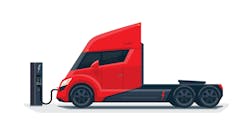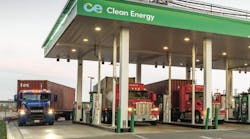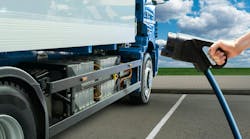The growth of e-commerce, which got a huge boost because of COVID-19, is likely to continue as many people not only got used to ordering online but now enjoy the convenience of it. E-commerce relies on getting goods to customers quickly and has led to the construction of more warehouses and distribution centers. This has impacted the trucking industry as we have seen a move toward more fleets in regional haul operations.
NACFE has done some work trying to understand the intricacies of regional haul and one of the things we’ve learned from our work is that regional haul is a market that makes sense for the deployment of battery electric vehicles. The good news is that we are seeing a lot of investments on the part of both existing truck makers as well as some new companies working to get battery electric vehicles through the development process, into testing and ultimately into real-word operations hauling freight.
However, getting battery-electric vehicles on the road is a little more complicated than just getting them built. Fleets needs to figure out how they are going to get them charged and that is where things can get a more complicated.
Step One in our Charging Procurement Roadmap – it came out as part of our guidance report on charging infrastructure – is engaging the utility. Sounds easy enough, but the reality is that it can be difficult to find the right person to speak with at the utility, and be prepared to first be shuttled off to the person who handles electric power for home EV charges. Also be prepared for the fact that you may have to work with several different utilities depending on the areas in which you need coverage.
When you find the right person, be prepared to talk about the following things:
- Long-term electrification plans, anticipated power needs, and draft site infrastructure design.
- Costs and timelines for building out “make-ready” infrastructure to support charging.
- How the location of the electric service on-site may impact site design.
- What fees you can expect for electricity, including any time-of-use and/or demand charges.
While we’ve published several guidance reports on various aspects of electric trucks, we’ve also recently published short primers— just two pages each. One is for fleets and the other for utilities.
Widespread deployment of battery-electric vehicles is not going to occur unless fleets and utilities work together to set up the needed charging infrastructure and can work together so that fleets can have reliable affordable charging.
Dave Schaller, NACFE’s industry engagement director has been working hard to make these connections over the past year or so. He says today, it’s oftentimes like a middle school dance where everyone is looking at each other and not only is no one dancing, but not even talking.
Michael Roeth has worked in the commercial vehicle industry for nearly 30 years, most recently as executive director of the North American Council for Freight Efficiency. He currently serves on the second National Academy of Sciences Committee on Technologies and Approaches for Reducing the Fuel Consumption of Medium and Heavy-Duty Vehicles and has held various positions in engineering, quality, sales and plant management with Navistar and Behr/Cummins.



